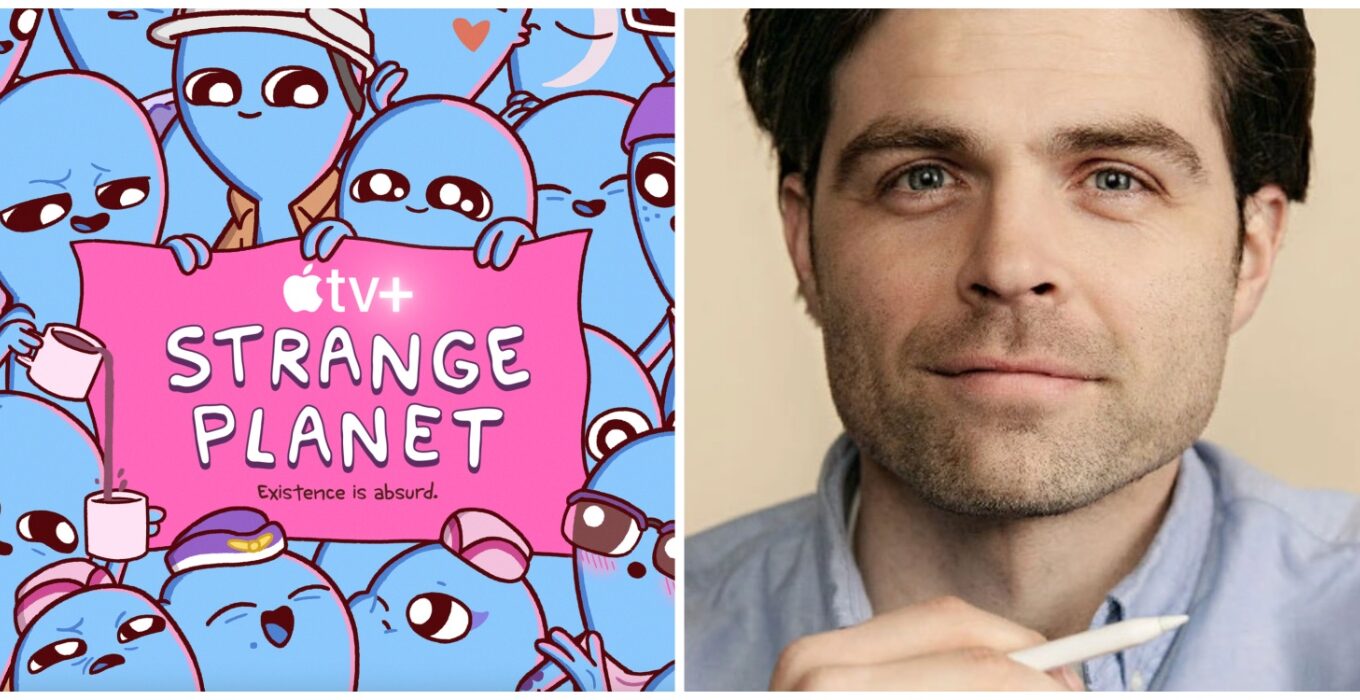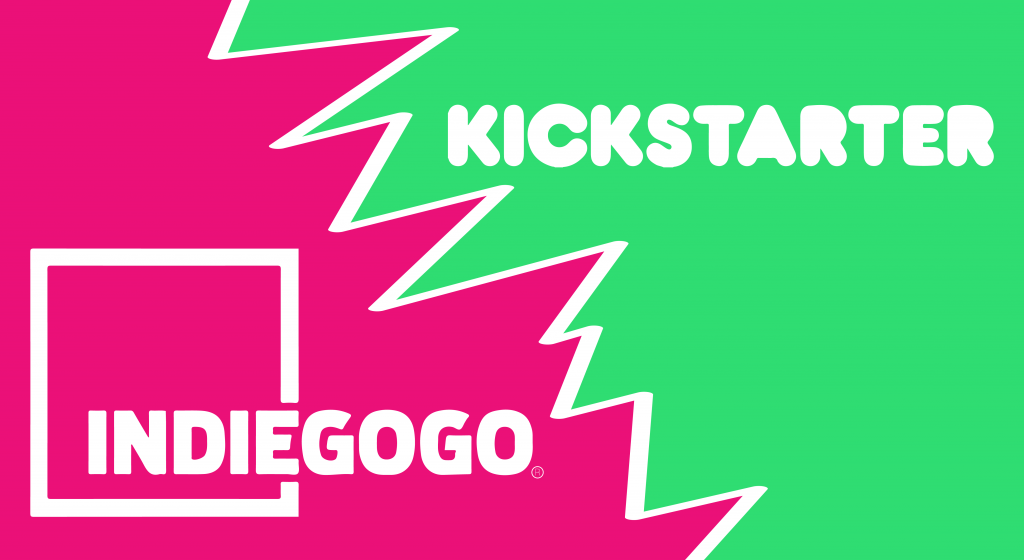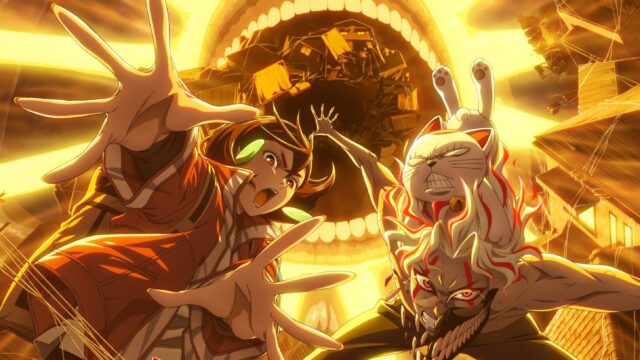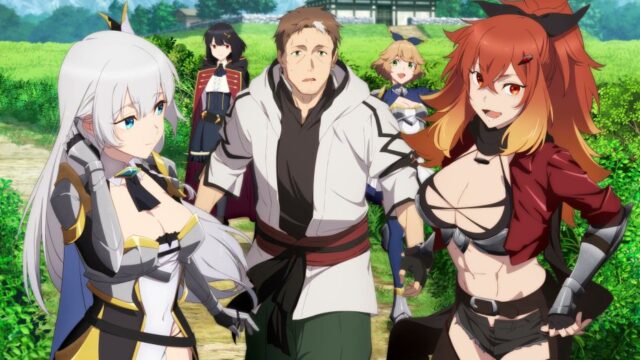[Exclusive Interview] Nathan W. Pyle on Celebrating Society’s Silly Idiosyncrasies with the Alien World of ‘Strange Planet’
Some of this generation’s most exciting and visionary storytellers have come out of webcomics. It’s no easy feat to routinely turn out new content that keeps audiences coming back for more. Nathan W. Pyle is a New York City-based cartoonist and writer who continues to hit new heights, especially when it comes to his signature creation, Strange Planet. Strange Planet delivers slice of life storytelling through a cavalcade of blue aliens whose unique ways of life astutely reflect humanity’s own evolution and habits. Strange Planet has evolved from its webcomic roots into New York Times bestsellers and now Apple TV+’s latest animated series.
Apple TV+’s Strange Planet teams up Pyle with Rick and Morty’s Dan Harmon, which is a sublime collaboration that’s created something truly unique, yet authentic to the webcomic’s original ethos. To celebrate Strange Planet’s transition to television, Nathan W. Pyle gets candid on the series’ tricky adaptation process, the limitless nature of its storytelling, and why extraterrestrials are the greatest tool to better understand the weird ways of the world.
Daniel Kurland: I remember seeing a Strange Planet shirt show up on Abed in Community forever ago. Clearly, there was a connection between you and Dan Harmon, but can you elaborate on that, how he became the show’s co-creator, and why he was the right voice to help you with this?
Nathan W. Pyle: That is a great question. Danny Pudi would wear shirts–as Abed–and one of them was my designs that just had a little Earth and moon spinning around, but it also happened to be in Community’s final episode so it was an extra special moment. I felt strangely drawn to this, having watched Community and also knowing Danny’s character, Abed, that was just so neat. It was an example of how my drawing could actually end up on TV some day, which was really cool. Even now, how many years later, with Strange Planet and Danny Pudi being a part of it and Dan Harmon being the co-creator does make it feel like an impossible dream coming to fruition. It’s been immensely satisfying to see that happen. At this point now, in the Internet era, that sense of camaraderie can be so much greater and I’m in touch with so many different people through Strange Planet and other media platforms. It’s amazing to now have professional relationships with these people that I idolized. These are amazing creators that I get to work with now.
Daniel Kurland: Can you talk a little about the difficulties of adapting a webcomic into a full TV series that must cover a lot more ground?
Nathan W. Pyle: I think immediately I’d be remiss to say that’s why I went to Dan Harmon. At the time, I had a webcomic. I didn’t have a TV show. However, I did have ideas for how the world could look. So Dan Harmon and Steve Levy–they were the only two in the meeting when I went in October of 2019. Dan and Steve were there and they understood television and they understood animation. They said, “We can see this.” And it made it easy to envision a show like this and I started to believe that if they can see it then there must be something to this. Part of it was definitely figuring out that there had to be a unique premise and unique ideas that are elastic enough that we can revolve new ideas around them. So some of the elastic–but core–ideas were that these beings don’t have names. In the comic, they’re simply unnamed. There’s not any particular way in which we distinguish them. They all look pretty similar. That was intriguing to Dan and Steve and so we looked at the opportunity of setting it in a world where these beings don’t have names, but they’re still distinct beings that are able to show change. I think there’s something about not having names that allows you to go in many freeing directions. You’re able to evolve and that’s what happens with our characters. There’s no name holding me back, so I can do this and be that now. The elasticity of that is what attracted Dan and Steve to the project.
Daniel Kurland: What was the show’s process for breaking stories and finding the type of ideas that could or could not be told in Strange Planet? How did the writers’ room operate and work with a much bigger creative staff than usual?
Nathan W. Pyle: I think there are a lot of wonderful connections that we made because we hired so many unique writers. Demi Adejuyigbe is a voice in the show, but also one of the writers and also writes original music in the show. There’s a lot of things that Demi has done to contribute to the show and when I think of Demi’s humor I think that was the voice that was immediately realized will work with this show. For us, that was really a big idea that we could start to see this constellation of talent that would make this a warm and inviting place. Beth Stelling is another writer whose writing and thoughts really helped make this the warm world that it is. We had a really fun group of people together.
Daniel Kurland: Strange Planet looks so gorgeous. Was it difficult to figure out how to translate the comic’s look into fluid visuals, but also how to help it evolve? Were there any difficulties in that process?
Nathan W. Pyle: There was a tremendous group of talent there, starting with the background artists. The ways that the backgrounds look gives the world so much depth. I can’t talk enough about background artists. They’re so important. When you’re looking at the show, what I think is neat is that when I was drawing the webcomic version I would only occasionally draw some kind of vista in the background or scenery. It was rare, so when you see this world now, it’s really something. April [Apodaca], our art director, her vision from the start was so crucial to the palette, and the look, and the architecture of this universe. This world is full of so many unique details that I never could have drawn. Their level of technical skill is so high. It was a really fun part of making the show and we talked at length about what a slightly better version of the world would look like. Part of that was mass transit and that their focus on mass transit creates a much more beautiful world. There are certainly countries and cities in the world that have good mass transit and I think that they always look more beautiful. Whether it’s buses, air trams, or trains. That’s part of what was fun to me about the show, that we’re making this better world and that includes the visuals.
Daniel Kurland: You establish a really rich world over the course of this first season, but where would you like to take things in a second season? Have there been discussions on how to expand even further on this world and its characters and what might be in its future?
Nathan W. Pyle: We certainly expand a little bit throughout the first season, but we don’t really explore the full map of the planet as much as I would like to. That’s a good example of how even with our experiences on the Earth, there are still parts of the Earth like deep down in the ocean or deep inside a cave that we still don’t understand. That’s what neat about making a planet because we’re exploring more of this world the more that we design it and tell stories in it. The audience gets to explore it too, so it’s a wonderful experience that you can take people to these places that don’t exist. Maybe they’ll make it as far as one of their two moons. It’s fun to figure out how they’ll continue to explore their planet.
The first season of ‘Strange Planet’ is now available to stream on Apple TV+




